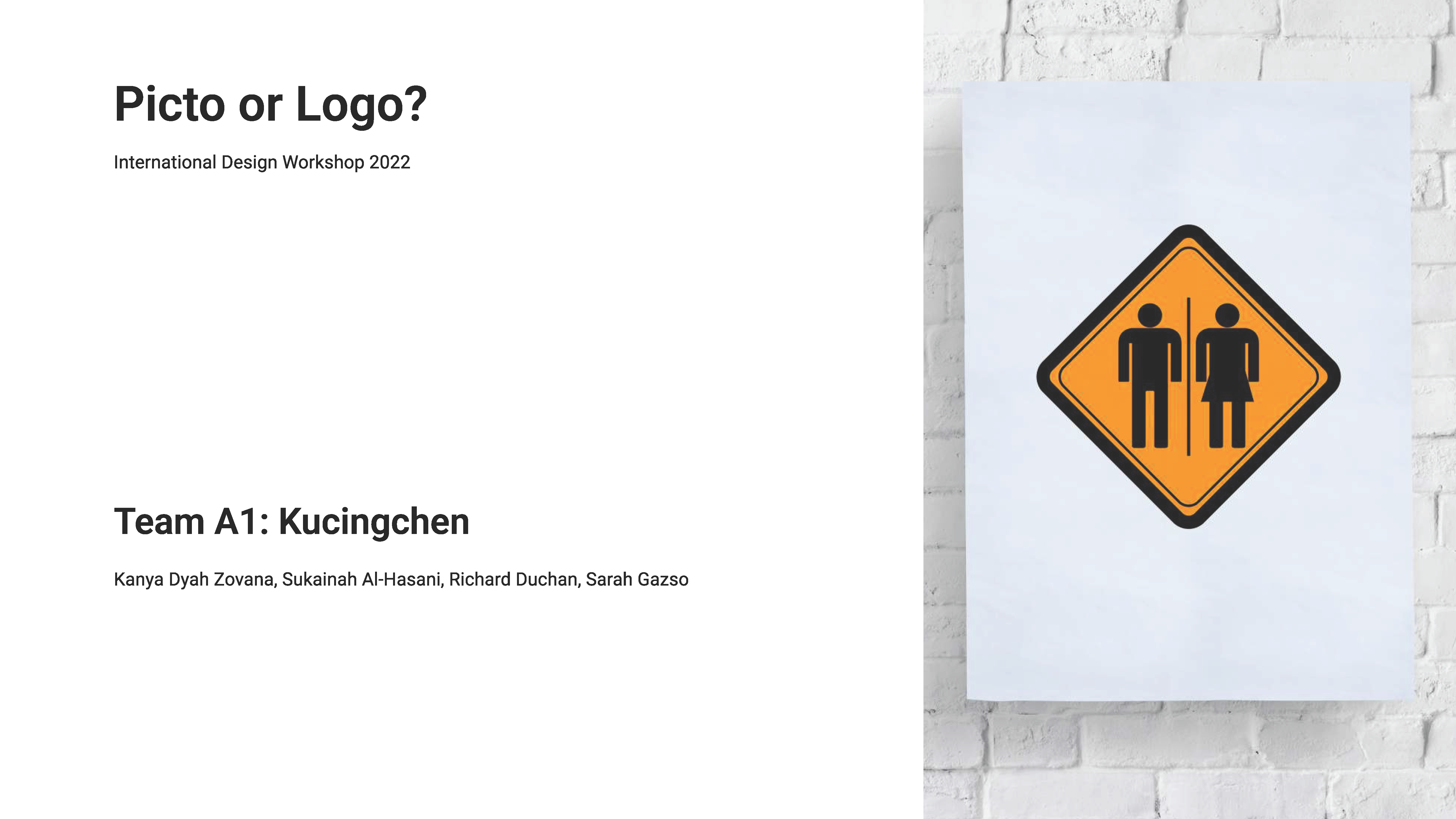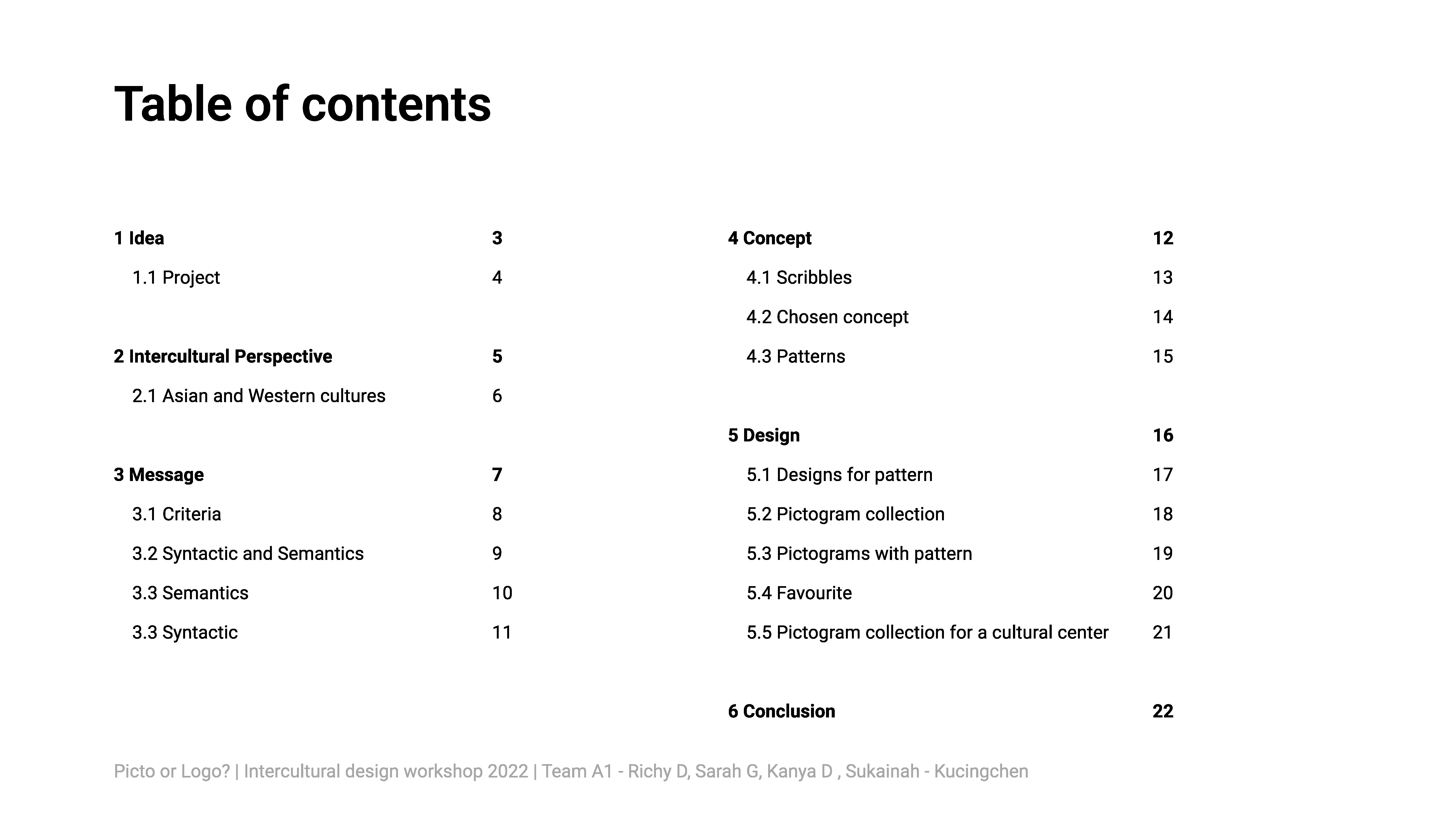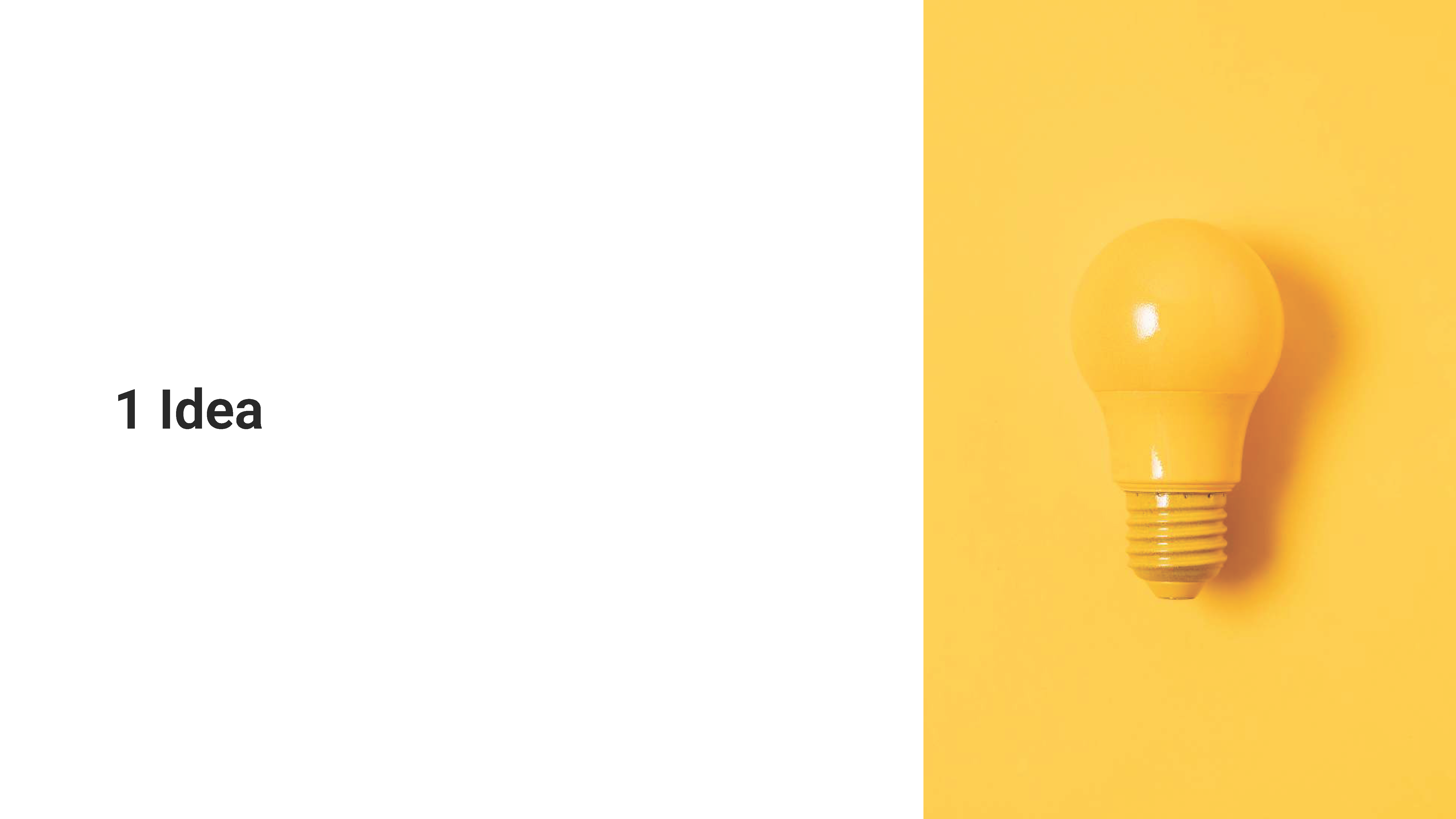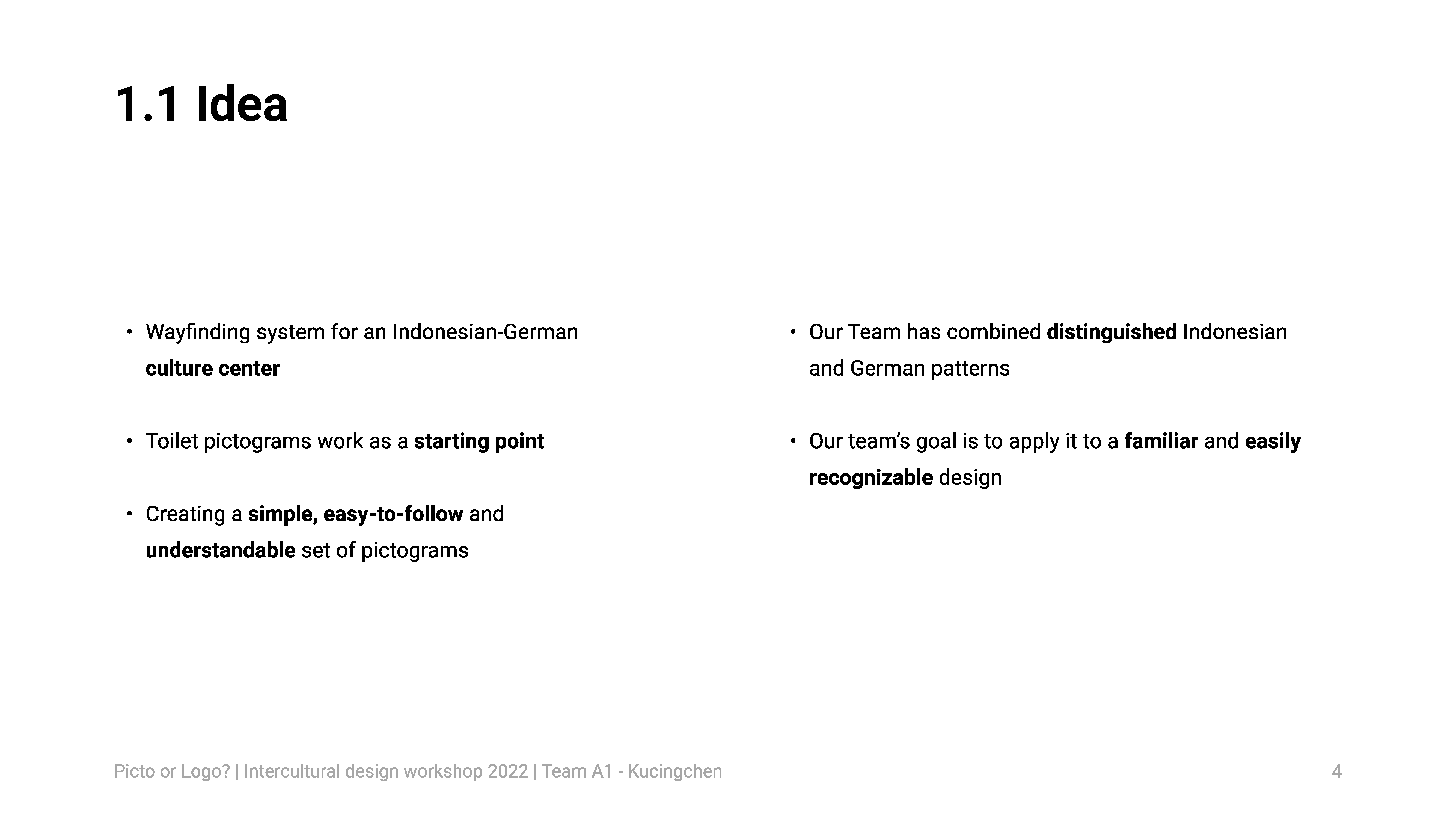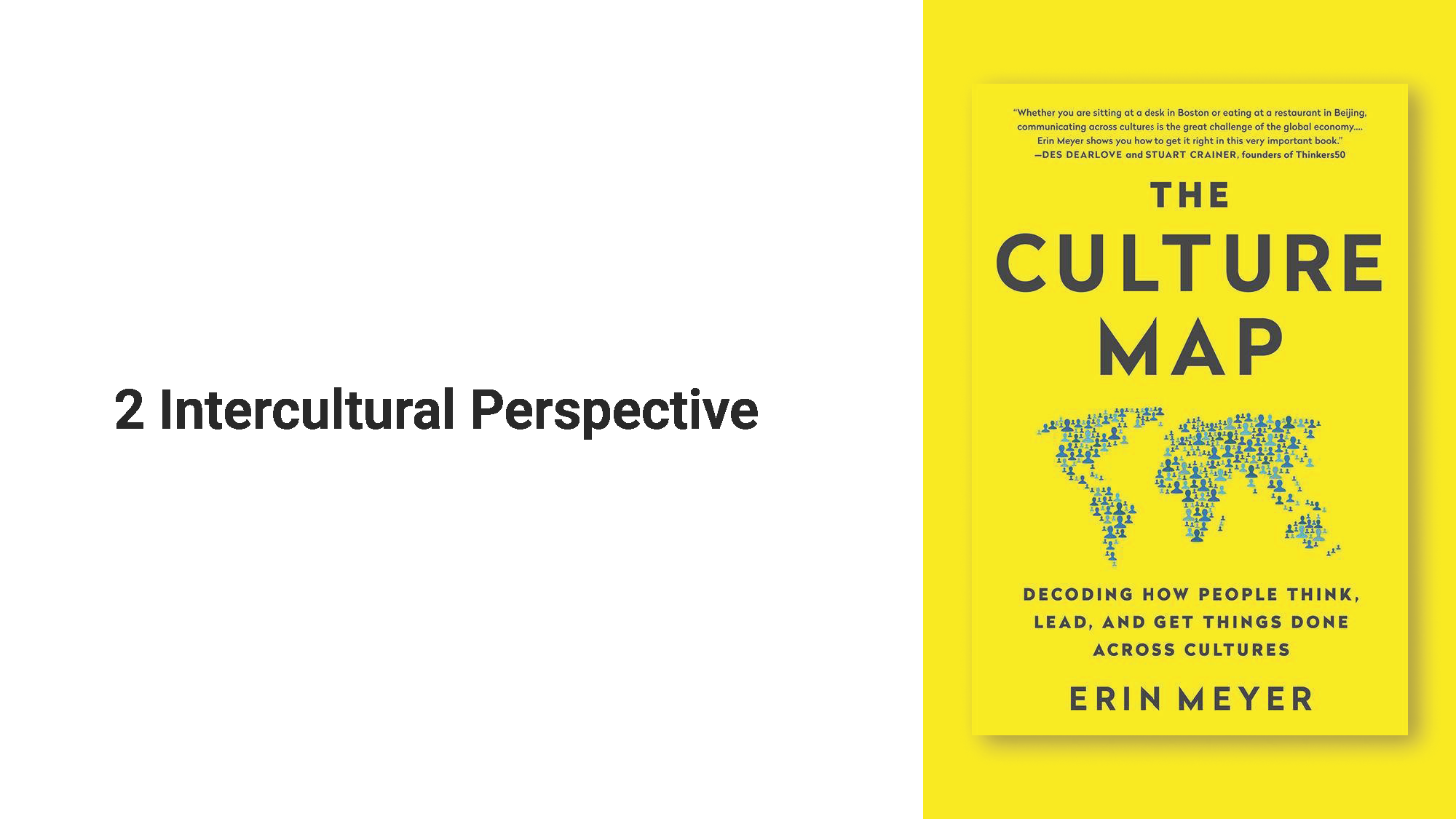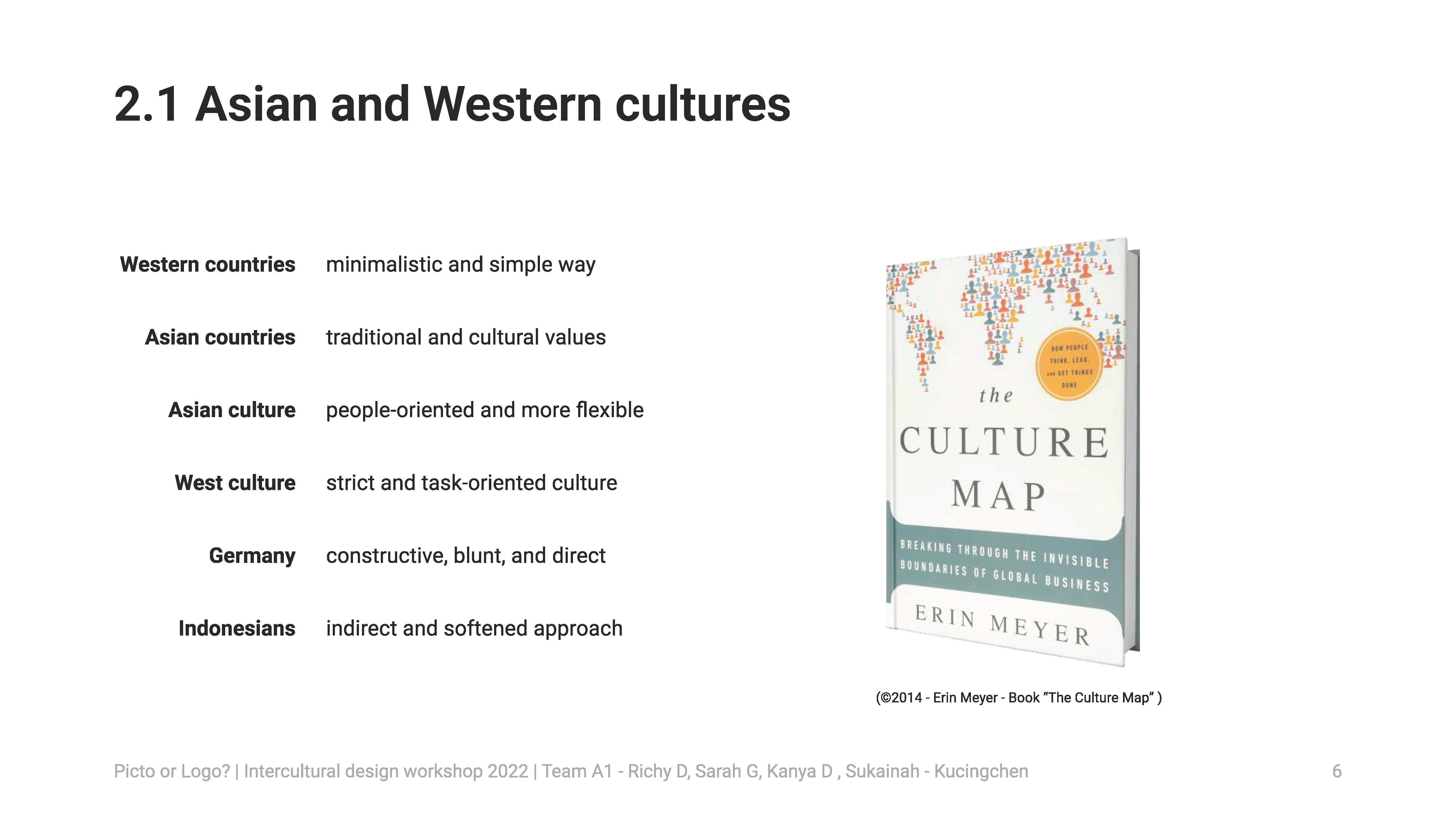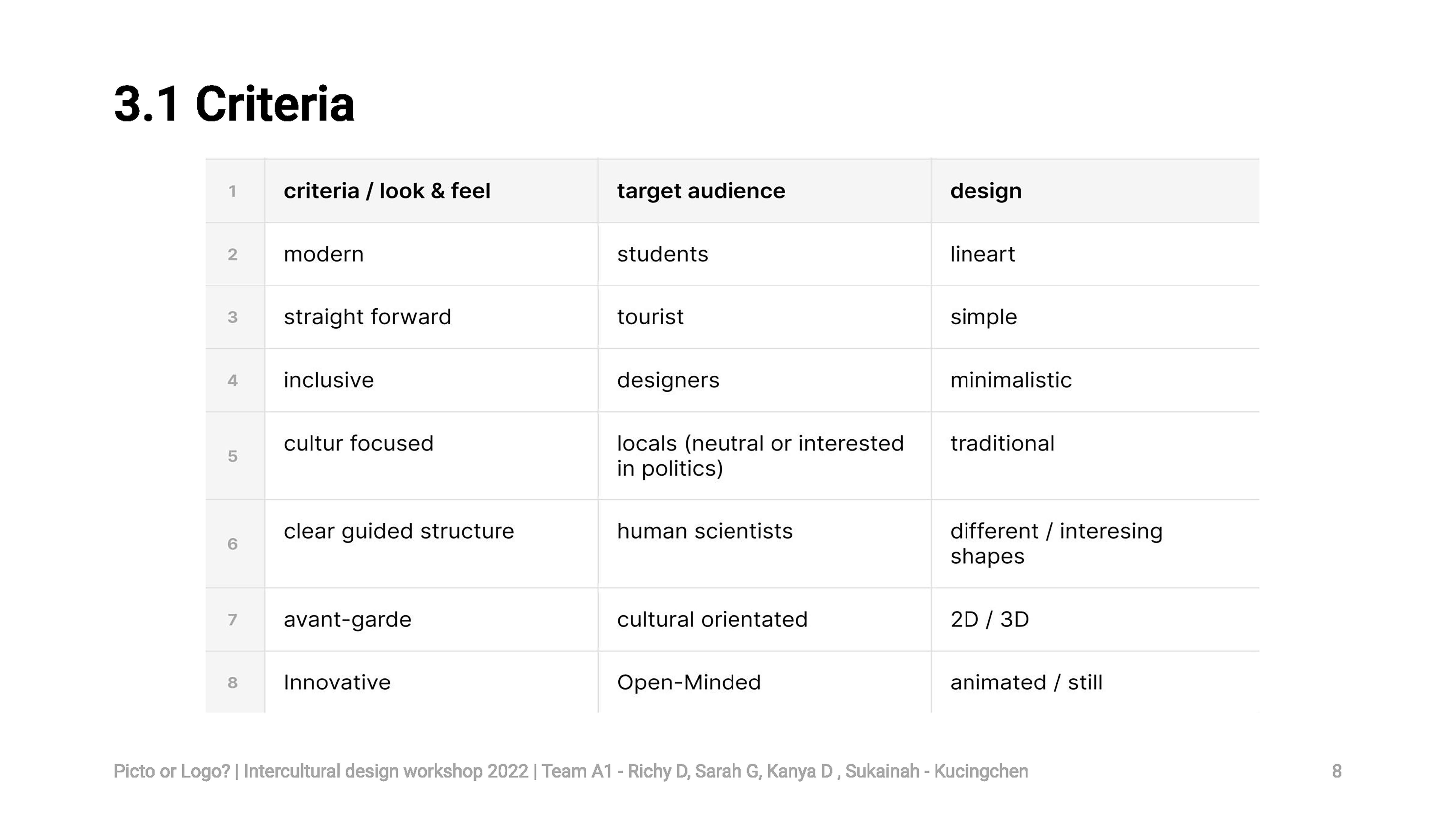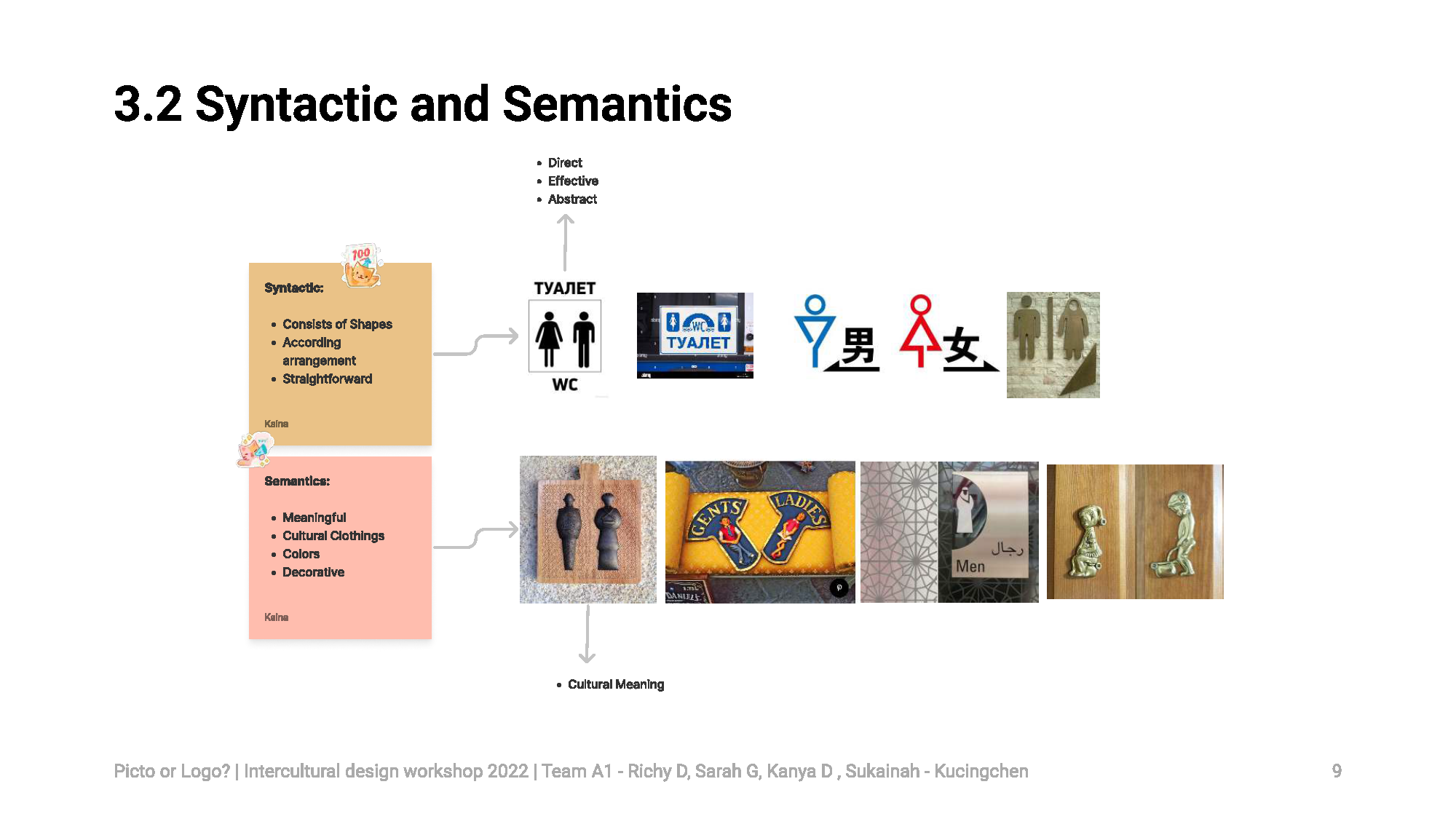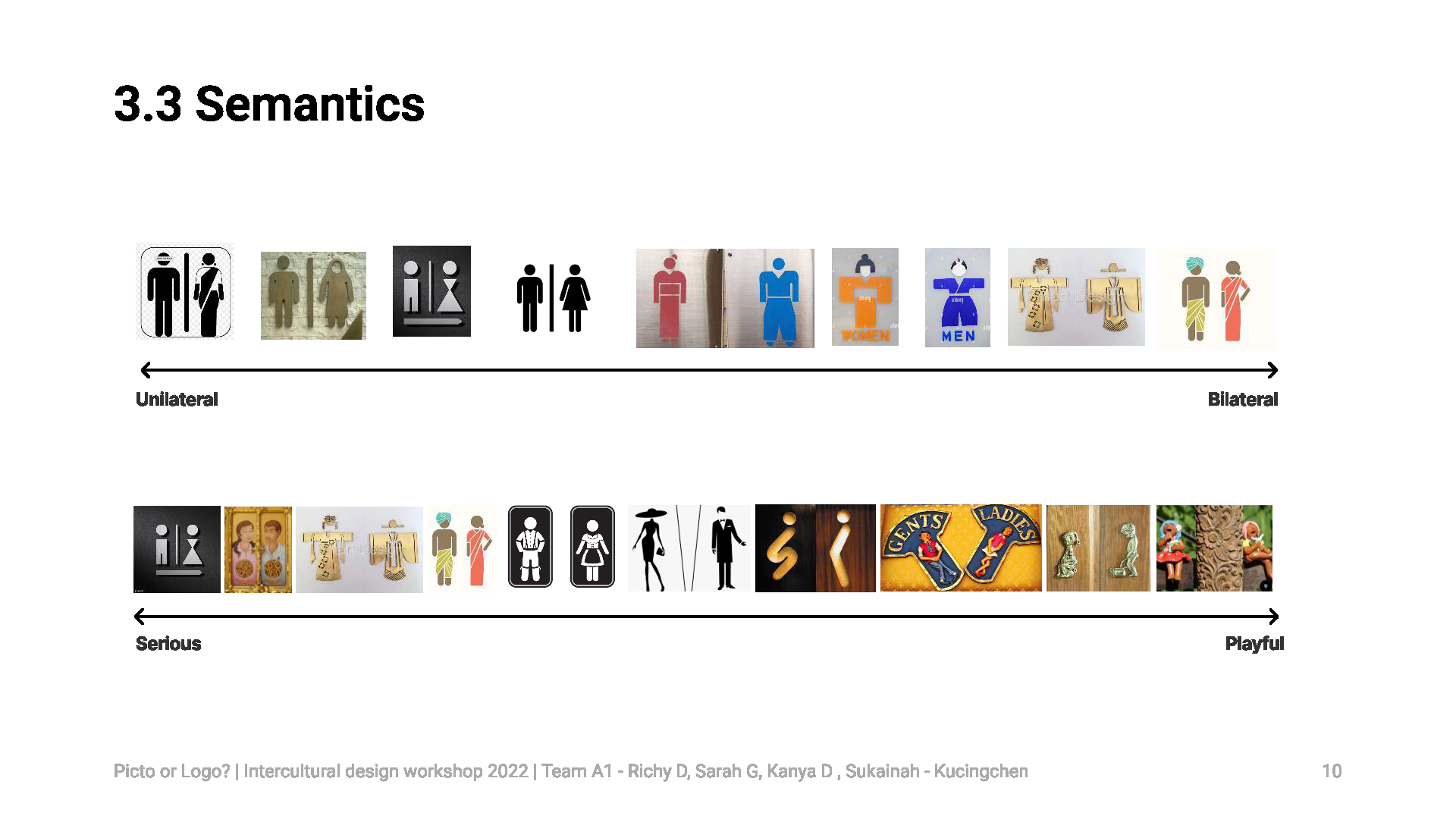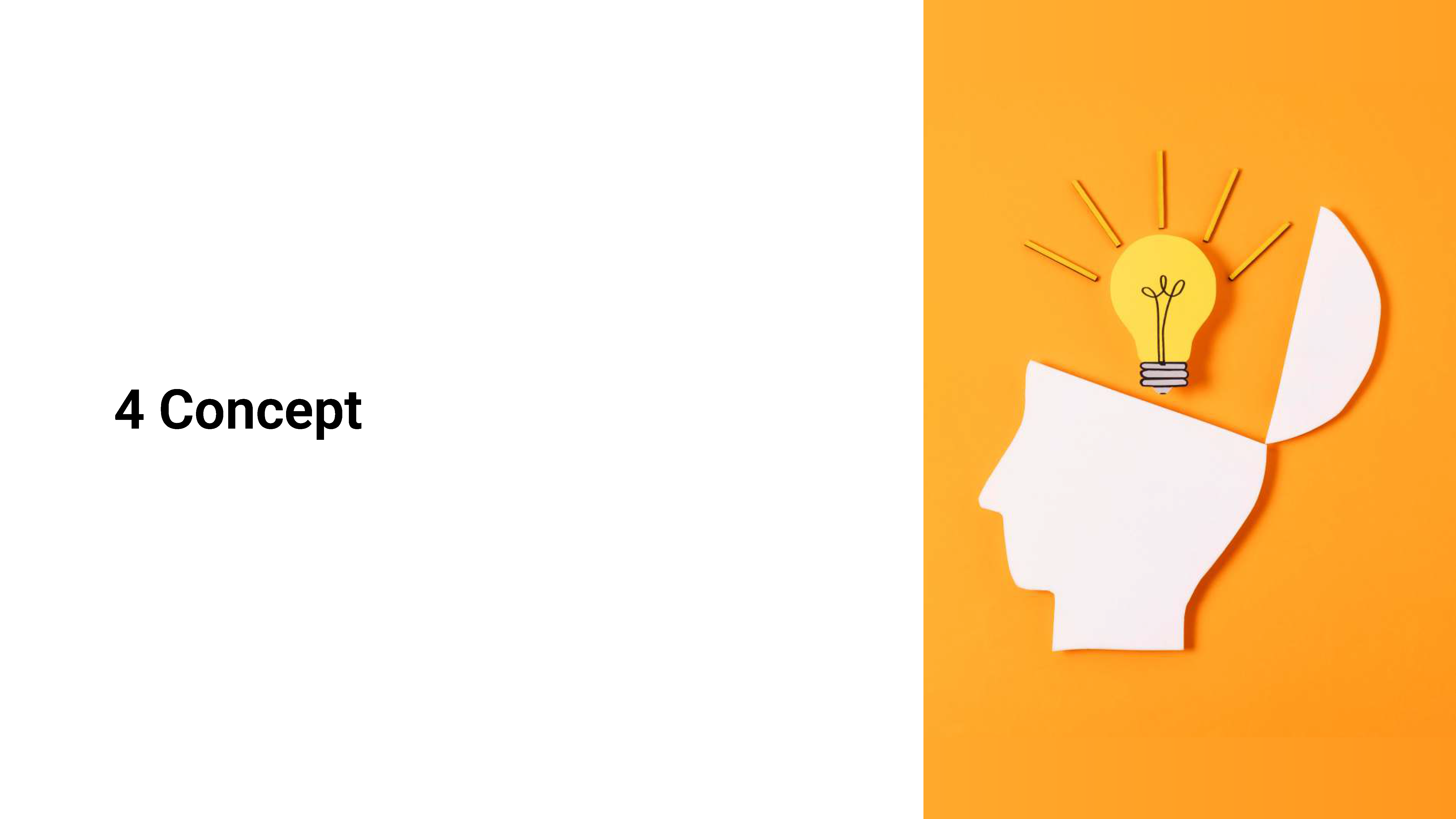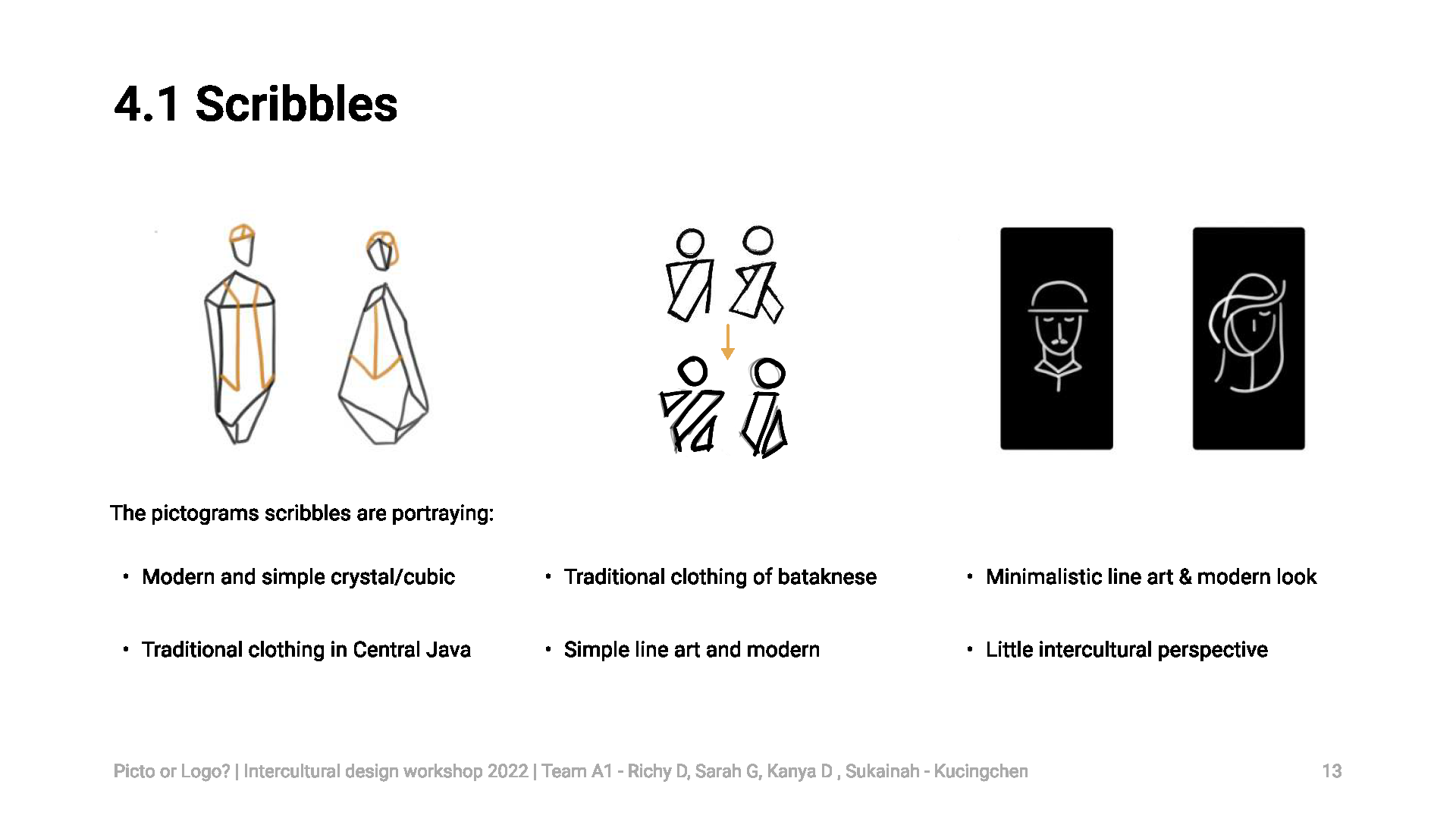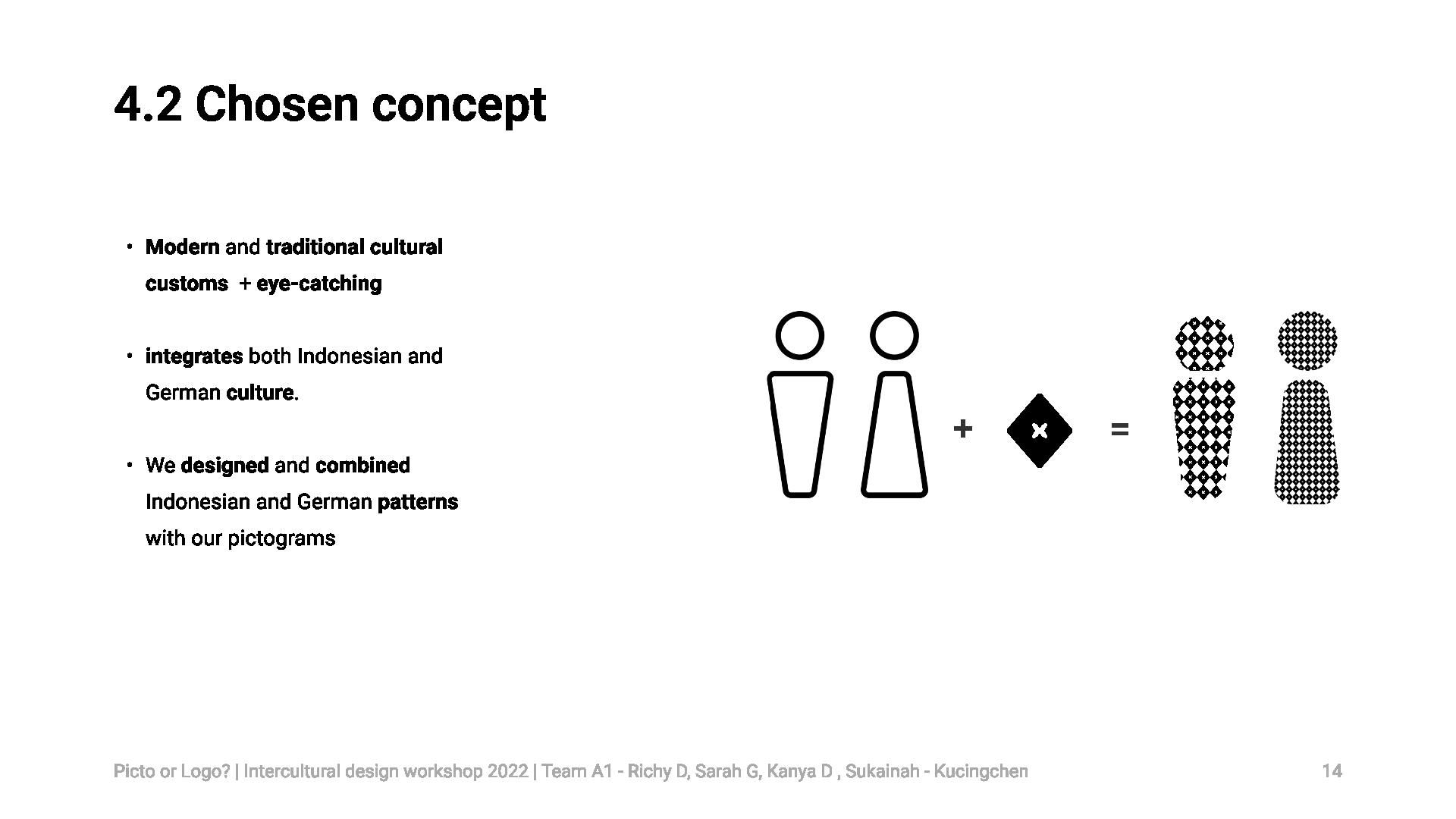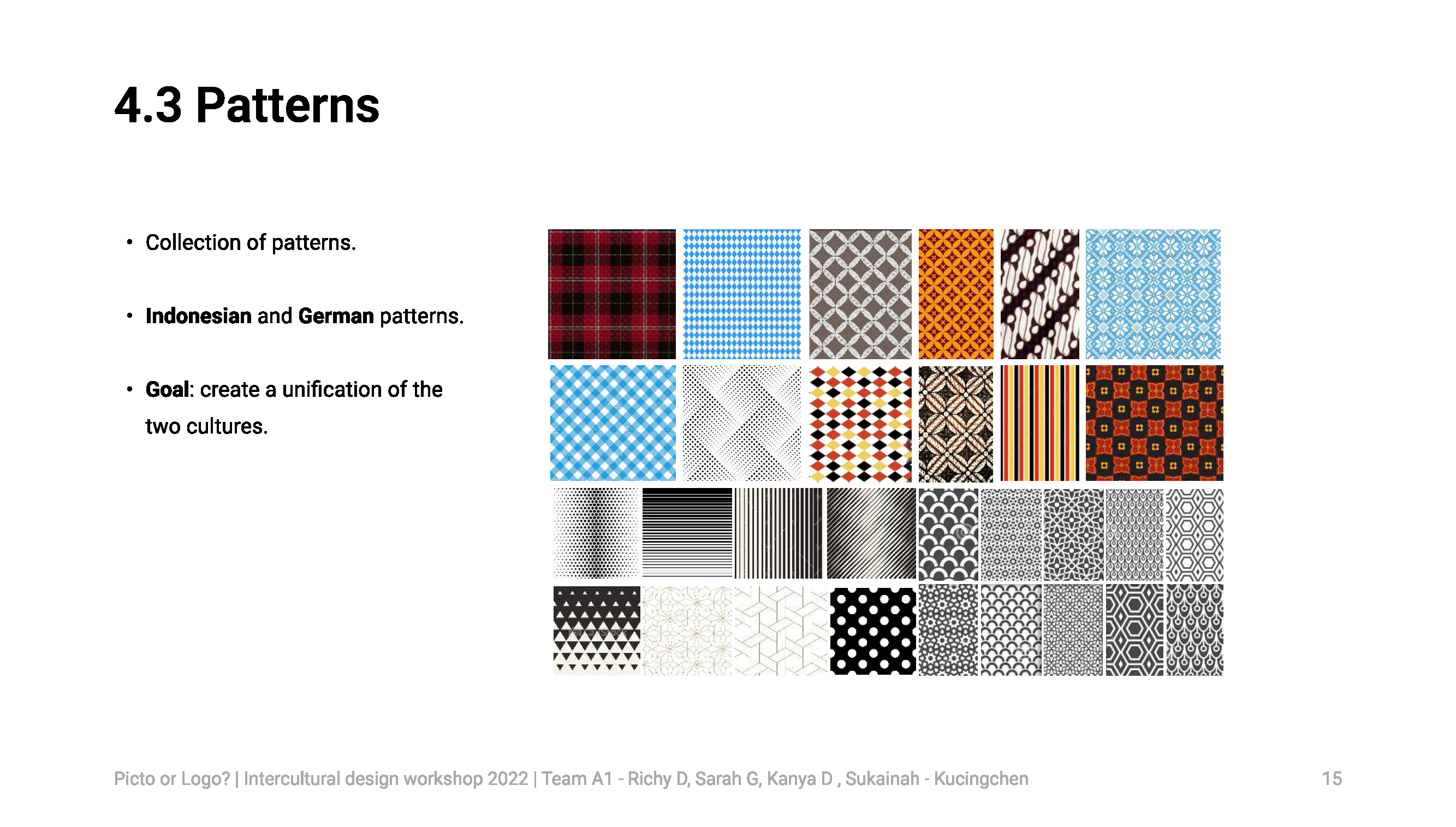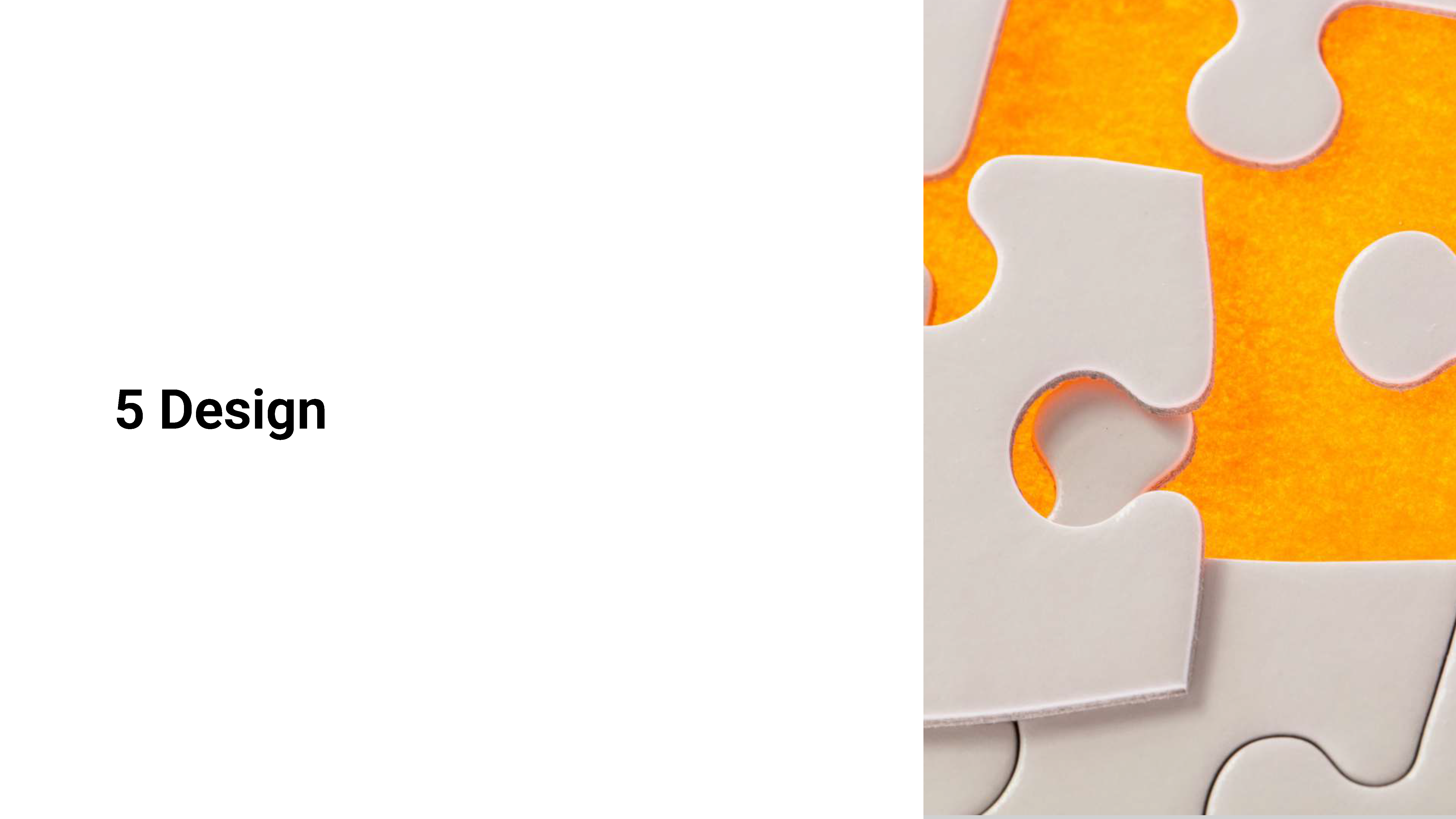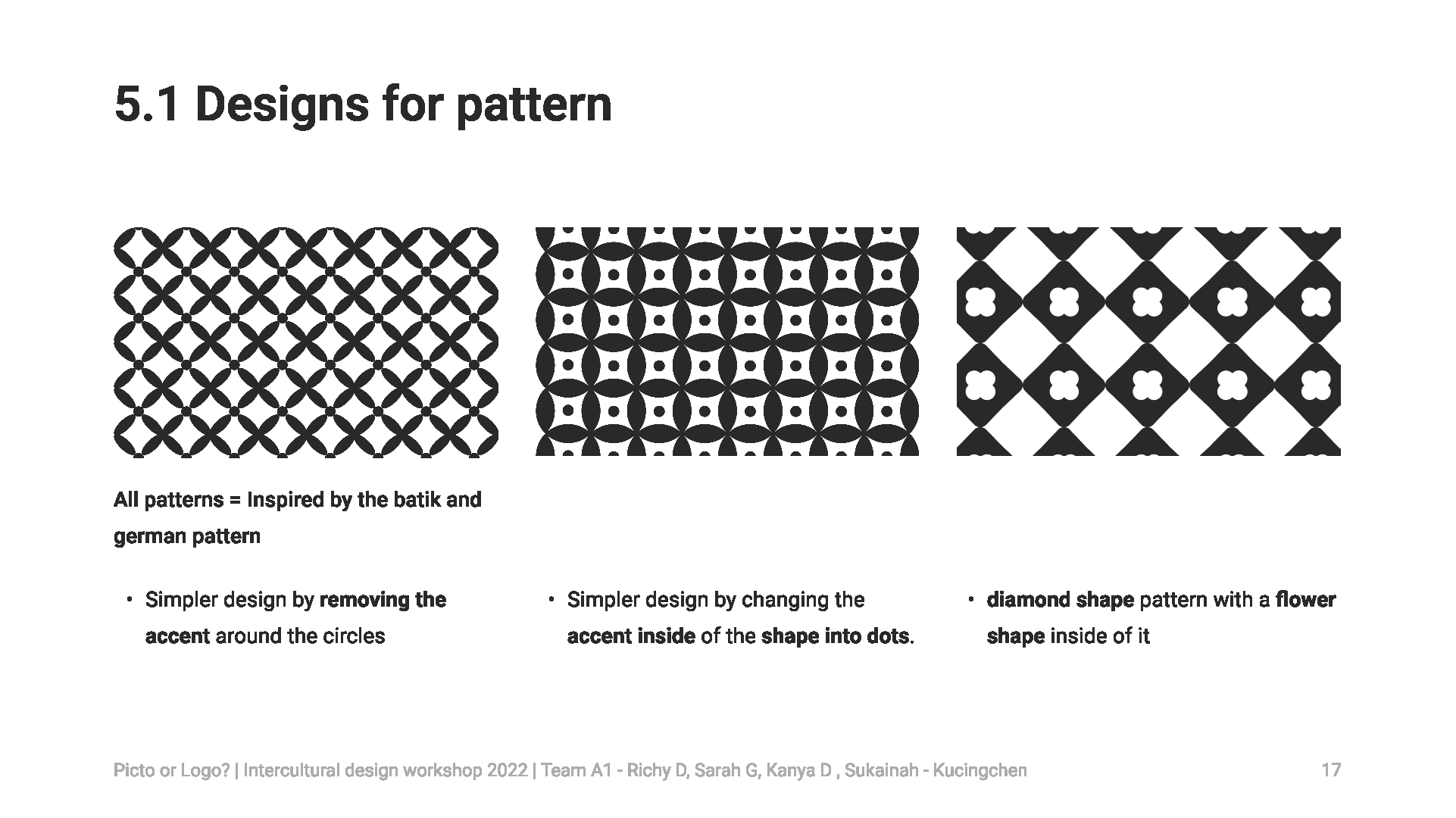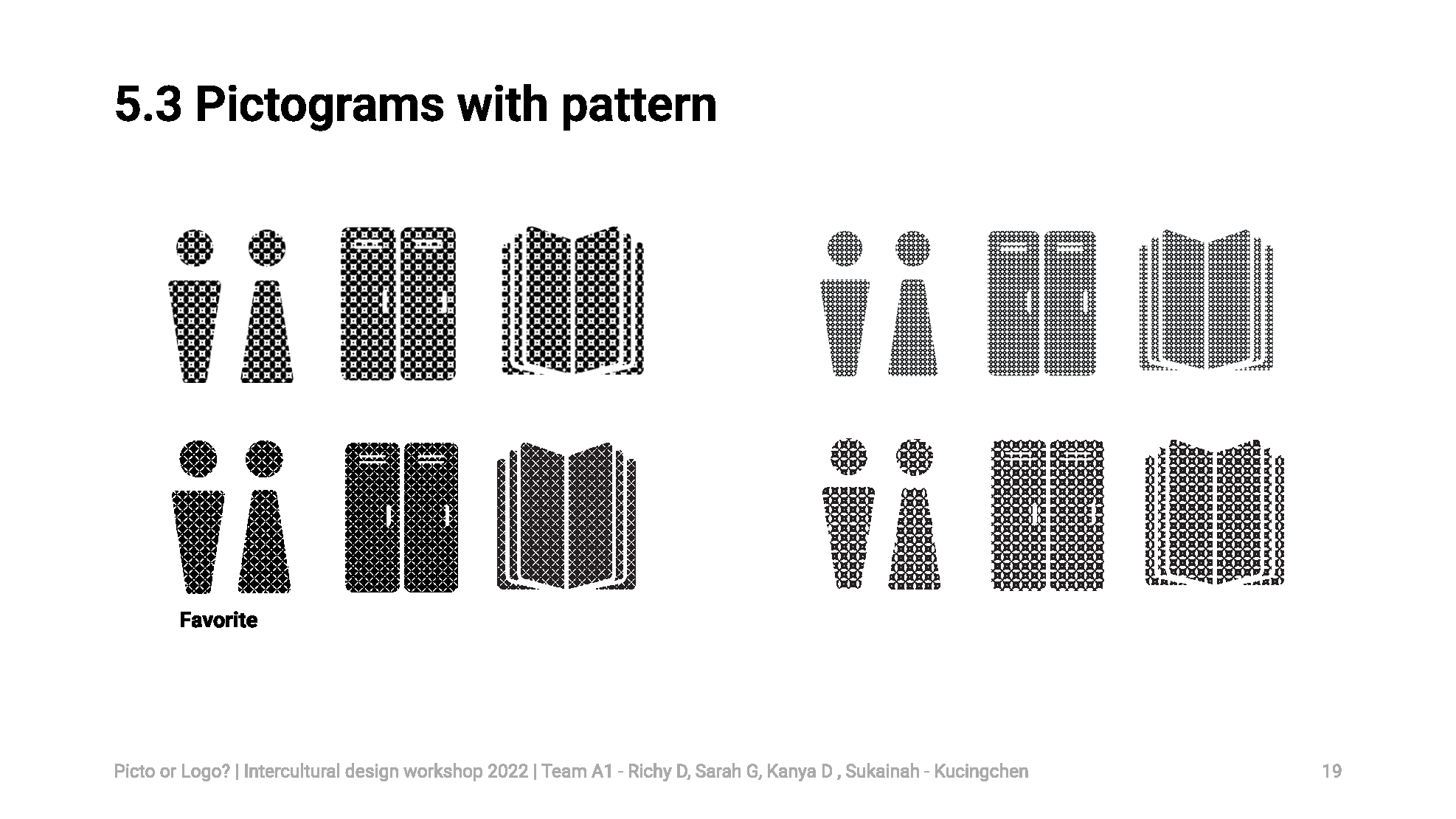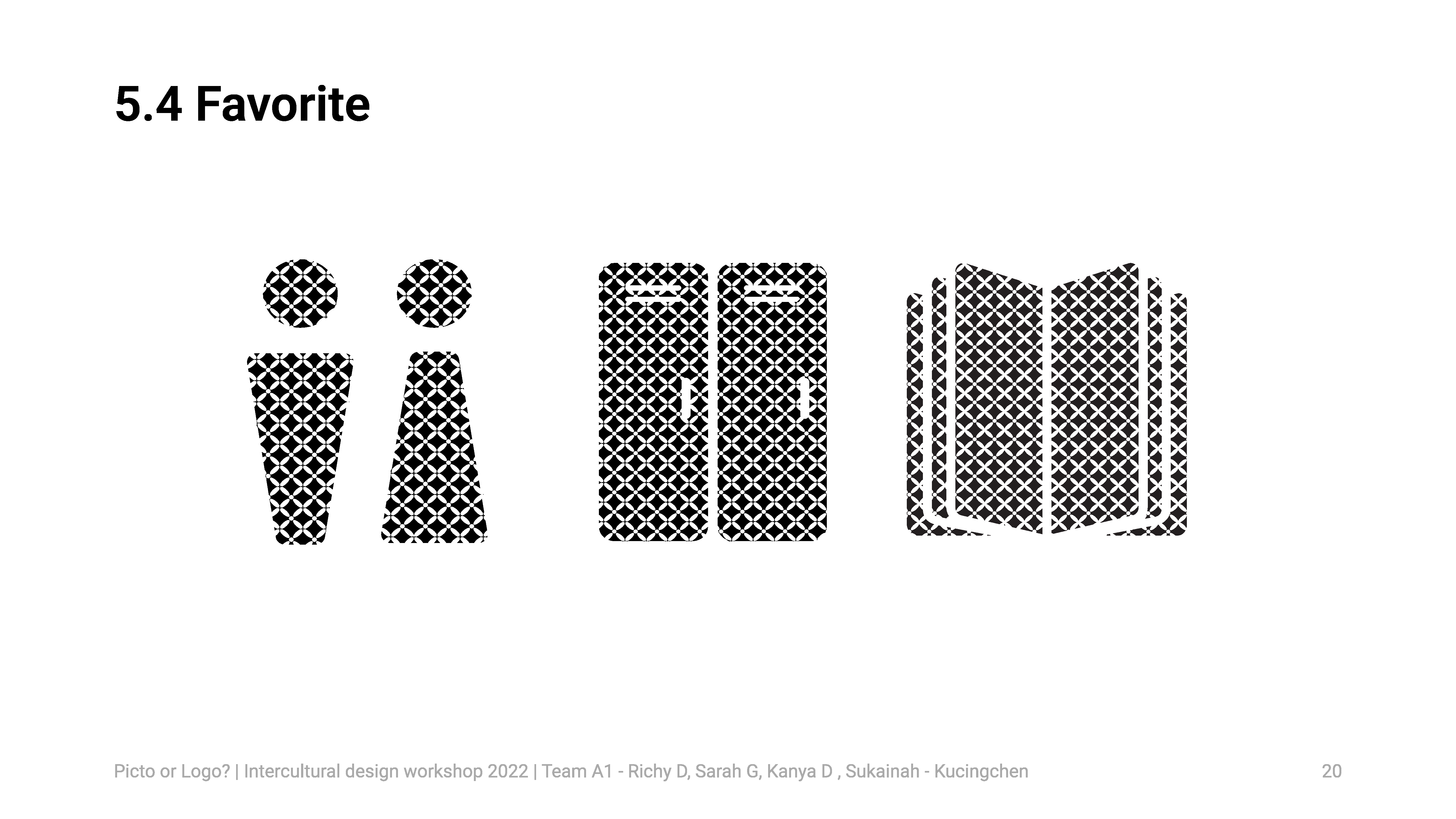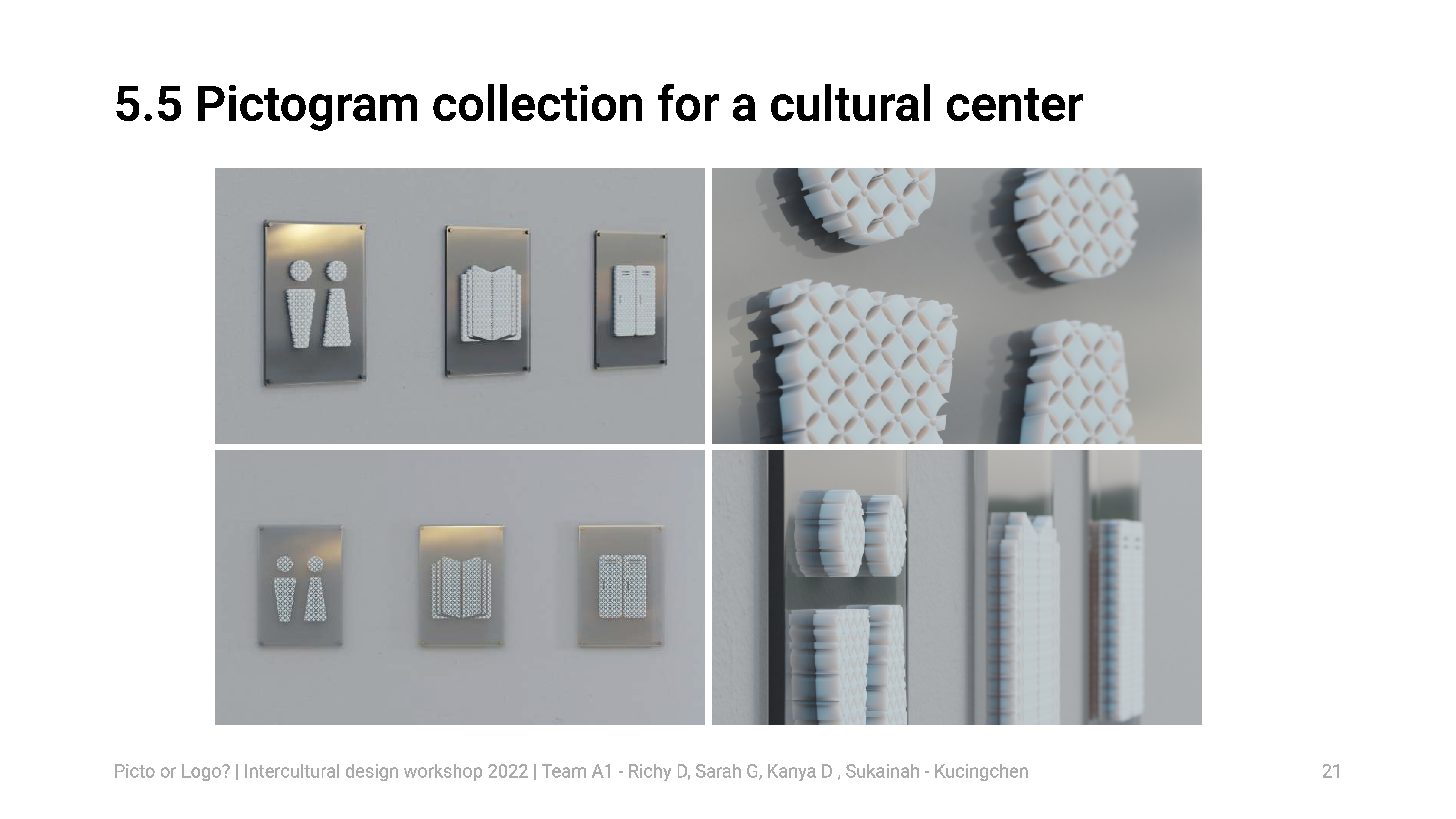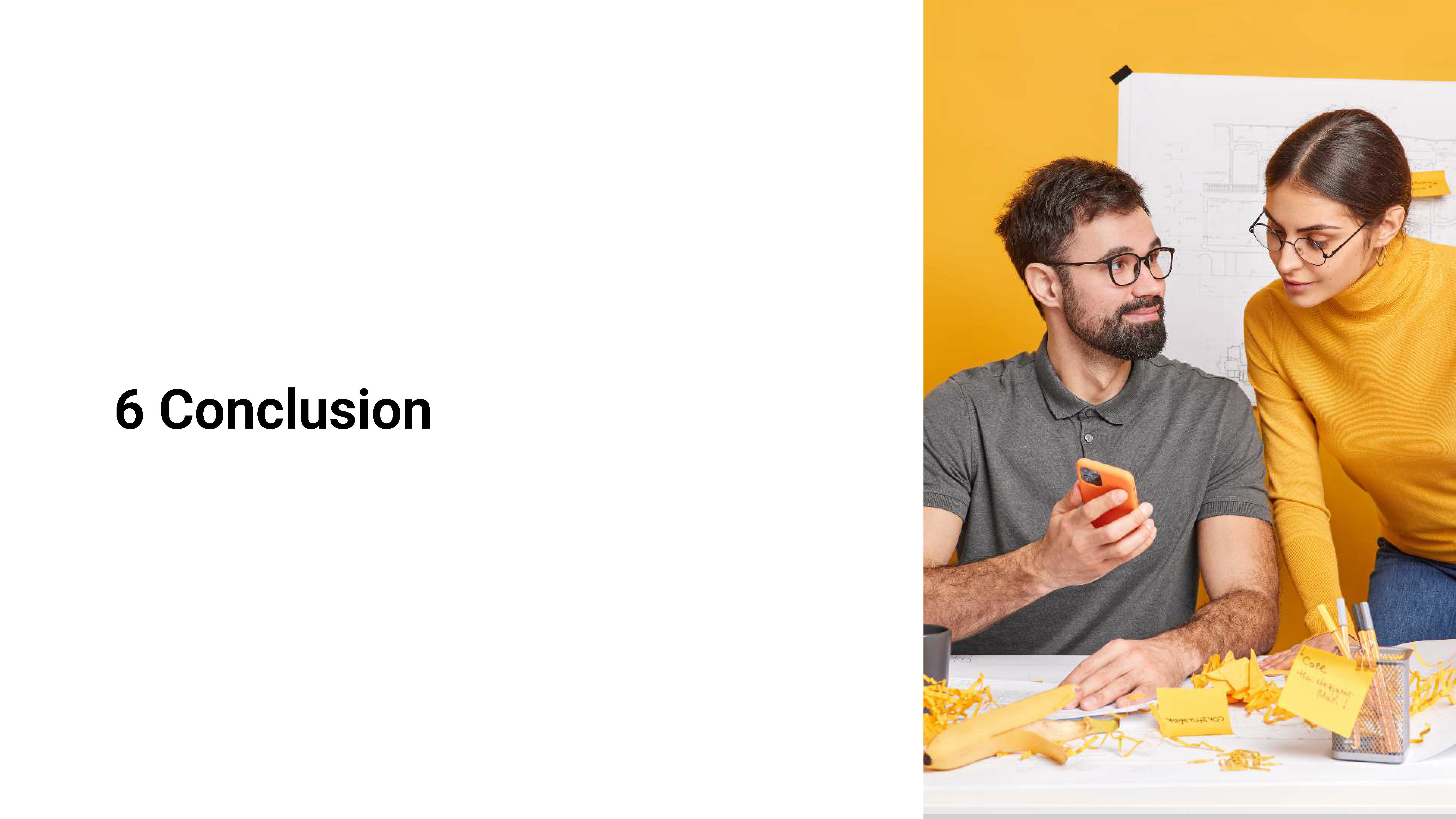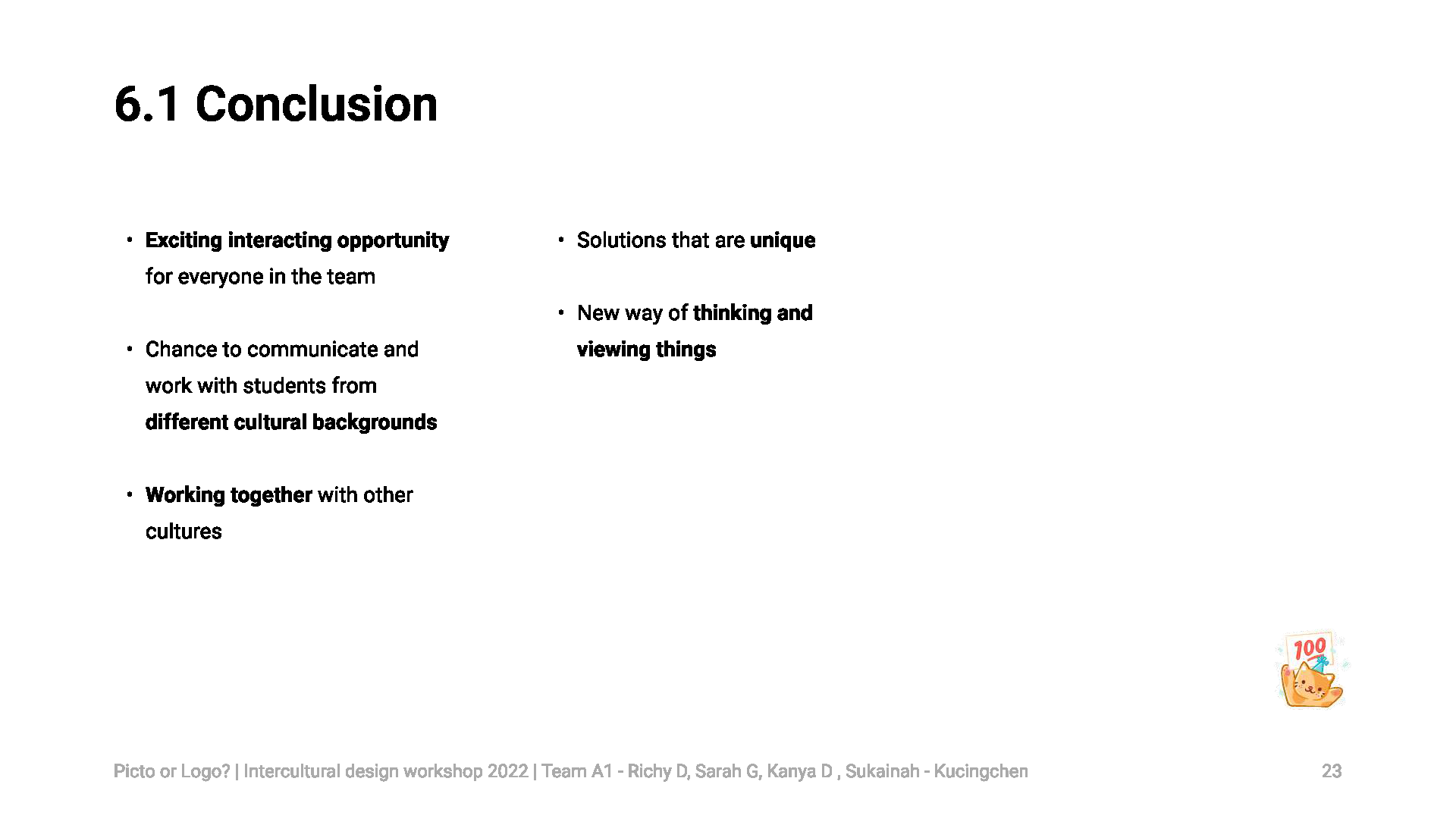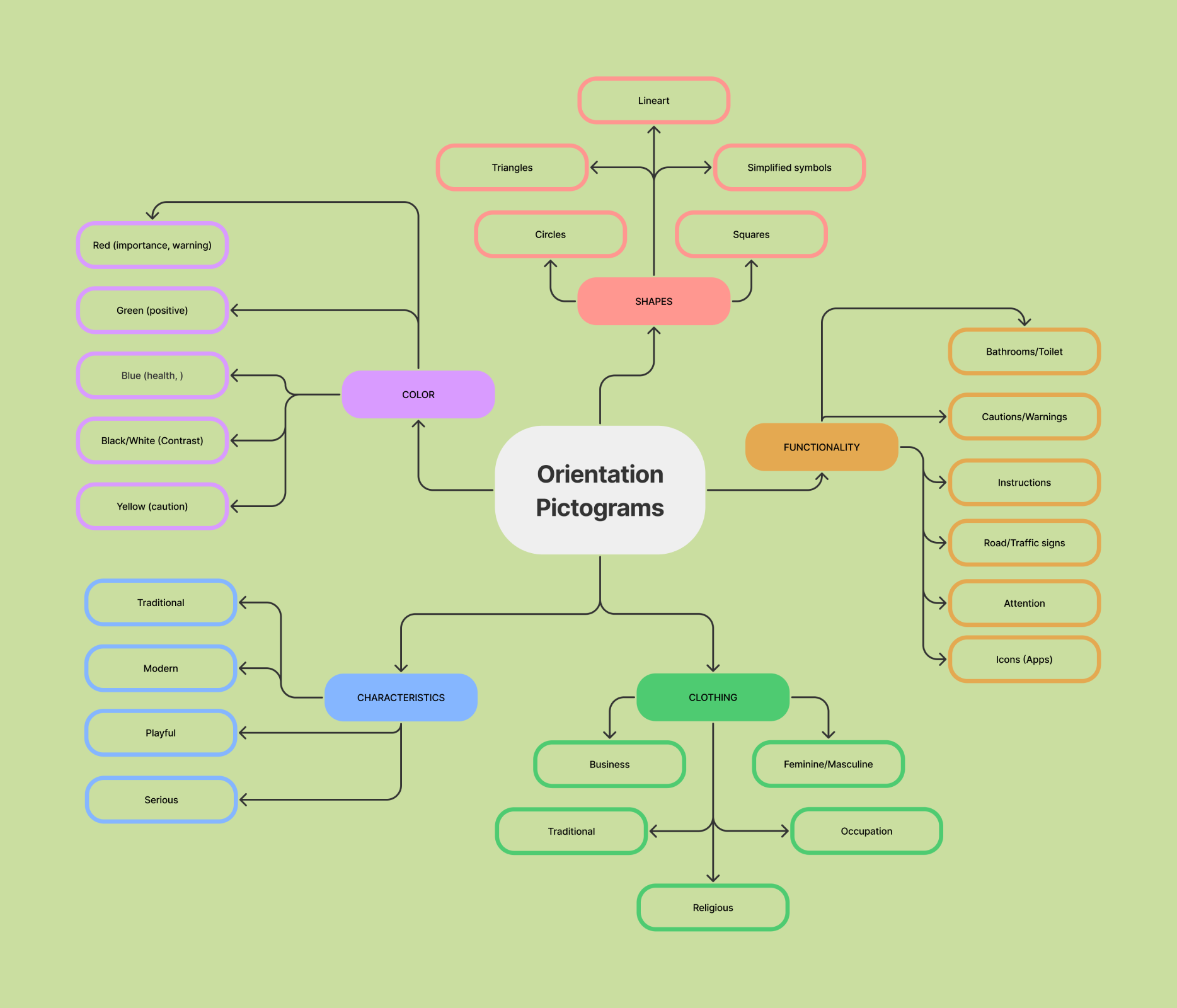

Introduction
Joining the workshop titled “Picto or Logo?” has provided us with a wonderful and exciting interacting opportunity. With four team members from Indonesia and Germany, we are expected and taught to appreciate and dive deeper into both of our cultures to find similarities and variations that can unite our differences. The workshop is focused on Pictograms and Logos, two things that rely on visual language, and both of our cultures play a big role in finishing the assigned projects. Our team has worked hard with the help of the supervisors and other members of the workshop to finish Project A, focusing on orientation pictograms that will be demonstrated in a cultural center.
Idea
This project is about a wayfinding system for an Indonesian-German culture center. Toilet pictograms are the starting point for a
set of pictograms that contains others such as lockers pictograms, library pictograms, and many more that would be used to
identify a space in a cultural center.
Pictograms can be thought of as a visual language that communicates with simplicity and comprehensibility, using images, symbols,
and colors that may represent groups, people, objects, and ideas. A pictographic language should also exhibit messages beyond cultural
and linguistic boundaries that are also inclusive in nature. Straightforward and self-explanatory designs that could communicate meaning
and make the perceiver feel a union between two cultures without using descriptive text is our team’s main goal in assembling this design.
Intercultural Perspective
A pictogram can be considered successful when the people at both ends of the communication (designer & perceiver) share a common interpretation. Within our small team, we have already encountered different design approaches,
since both Indonesians and Germans have incorporated their own unique style. In many aspects, the feedback culture in Germany is usually constructive, blunt, and direct while Indonesians
might come across as more indirect and softened in giving negative feedback. (©2014 - Erin Meyer - Book “The Culture Map” ) For example, in dealing with different opinions and perspectives in our team, the German students might give a straightforward reply and opinion compared to the Indonesian students, this resulted in German students having to tone down and adjust to our Indonesian way of evaluating and communicating.
Western countries are more likely to approach a design in a modern, minimalistic and simple way, meanwhile Asian countries tend to implement traditional and cultural values in their pictograms.
The Asian culture moves into a more people-oriented and flexible direction while the West has a strict and task-oriented culture. Indonesian people include everyone around them in their conversations so no one is left out and they’re
also very curious, especially when it comes to asking questions. The purpose is to maintain harmony throughout the conversation (©2019 - Cultural Atlas -
“Culture Communication” ), while western-cultures are used to getting to the point quickly and straightforward.
Message
Our Pictograms have to be understandable to everyone in our target group, especially if it consists of Asian and Western cultures that are based on students, tourists, designers, locals and culturally oriented people with an open mind towards culture, and that are looking to acquire a new knowledge on their journey. That is the reason why we included minimalistic pictogram designs with German and Indonesian patterns, so every single individual in our target group regardless of their cultural background will have a common understanding.
Concept
Combining modern and traditional cultural customs are important to our team, making sure that cultural symbols are still interpreted correctly and seem engaging enough to catch the eye of newly interested locals, tourists, and students that are viewing our design. In order to develop a minimalist design language that integrates both Indonesian and German culture, we developed a concept that conveys both aspects. As a group, we started a collection of important pictograms for a cultural center that is visually understandable and considered standard symbols around the world. These are abstracted pictograms. We designed patterns that are strongly culture-dependent for the intercultural part and combined Indonesian and German patterns which are inserted afterwards into those pictograms.
Design
Different cultures and traditions will affect the design and structure of a pictogram, it is important to keep in mind that the design must always be devoid of any ambiguity, considering the utilization of a pictogram as a universal language. Our team has combined distinguished Indonesian and German patterns to create something more versatile that fits into a unified style, applying it to a familiar and easily recognizable design.
Conclusion
Throughout the entire process of designing and experimenting with tasks together as an intercultural group introduced us to a whole new way of thinking and viewing things. Only by working together with other cultures can you come up with solutions that are unique and, above all, bring both worlds together. Having the chance to communicate and meet with people and students that come from different cultural backgrounds was very eye-opening.

